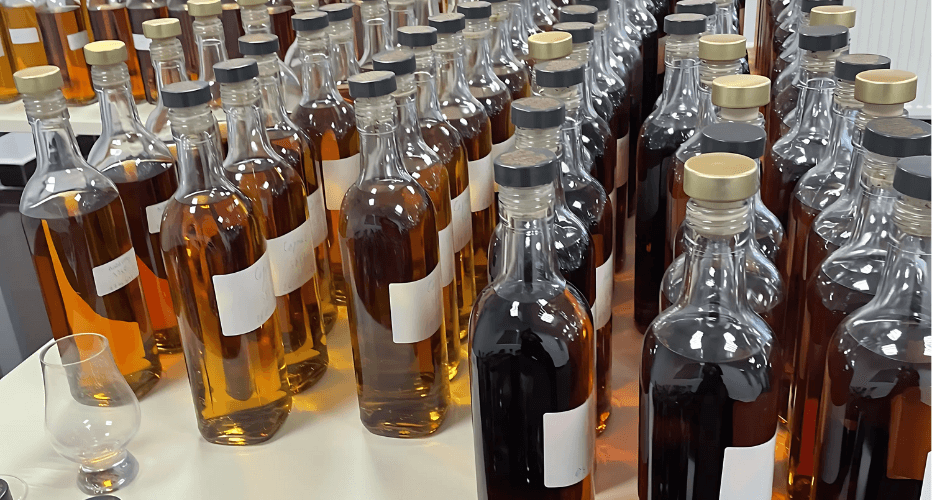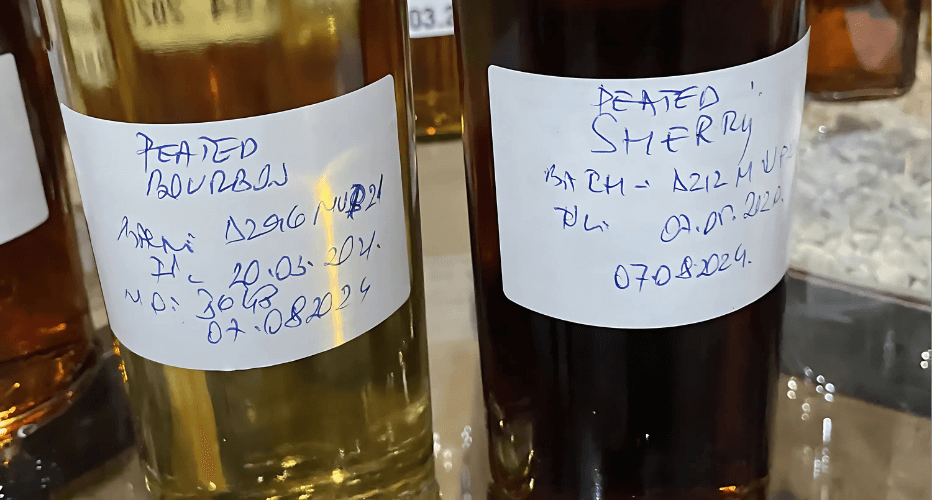Super Early Deadline
30 November 2025
Judging
Date
24 & 25 March 2026
Winners Announcement
22 April 2026
30 November 2025
24 & 25 March 2026
22 April 2026

In the world of whisky, where craftsmanship meets artistry, the expertise of a Master Distiller is a beacon for enthusiasts and connoisseurs alike. Allan Anderson, a seasoned Whisky Director and master distiller with decades of experience, has dedicated his career to refining the delicate balance of flavor, aroma, and character that defines exceptional whisky. Renowned for his discerning palate and innovative approach to distillation, Allan has become a trusted authority in the industry.
As a judge at the prestigious London Spirits Competition, Allan brings his unparalleled expertise to evaluating some of the finest spirits in the world, making it a privilege to have him share his wisdom as a whisky expert in this exclusive interview.
Whether you’re a budding enthusiast or a seasoned collector, his guidance will deepen your appreciation for the nuances that make each dram unique. From the importance of heritage and terroir to tips on evaluating flavor profiles, Allan offers a masterclass on what it truly means to create and recognize a remarkable whisky.
The first thing I look for in a blind-tasting is the colour, this tells me what type of barrels the whisky was matured in. Next, it’s the legs on the glass, I like to see an oily whisky with a long-lasting and lingering coating around the glass. I also raise the glass to the nose; I want to smell all the great things that make a good whisky like Caramel, Vanilla, Dried Fruits, Spice, Citrus notes, Christmas pudding, and the Peaty, medicinal, tar notes if it is a peated whisky. These all need to combine to form all the good traits we love in a good whisky. Regarding the all-important taste, my palate looks for a rich, sweet full-bodied creamy, and rounded whisky that coats the mouth, and for me a little spiciness and zest adds to that experience and is always good, leaving a long and lingering taste with no burn.

Approving casks for the next bottling of Romania’s 1st Malt Whisky
The rule that older whisky is best is often misleading, if the Distiller selects the best barrels from the best cooperages, the results are very impressive, even in a relatively short number of years; attention to charr & toasting levels can give great results. The type of wood selection and the environment in which the barrel has matured, all have big influences on quality and the outcome of a whisky’s quality.

No two whiskies are the same in a blind-tasting. It is important to know the ‘Provenance & History’ if a comparison is to be made, but innovation can and should produce consistent results. Established brands tend to be rather monotonous because of the consistency and lack of innovation, whereas newer distilleries are more open to trying different mash bills, fermentation techniques, yeast strains barrel finishes, etc. Scotland by law has restricted itself to consistency, whereas other countries have more freedom to try something different often producing fantastic results.
On the nose – notes of Sulphur, rotten eggs, vinegar, wet paper, and wood are all off-notes and at the other end of the scale, no smell at all can be an indicator that something isn’t right too. On the palate burning, a generally bad taste, acidity, and metallic taste are all indicators of bad whisky.

Alexandrion Distillery
In whisky production “everything matters” from the very beginning of the process to the very end and everything in between has an impact on the dram we pour into the glass. We [The Alexandrion Group] have developed our own yeast strain, taking wild yeast cells from the skin of Feteasca Neagra grapes grown in our own vineyard making a viable strain of wine yeast, which is unique for Carpathian Single Malt Whisky. It is important to have the best fermentation conditions possible, to convert all the sugars to alcohol with a fully fermented washback over three days, which is our standard and this gives a pleasant fruity distillate. Hygiene, time, and temperature all play their part in quick fermentations producing less flavour, so it’s best to find a fermentation duration that gives the results that a distiller wants, for us three days approx. works well.
[[relatedPurchasesItems-63]]
After 30+ years producing whiskies in three different countries and participating in many whisky shows, I’ve listened to what the consumers want and like, and my summation is, that like the whisky itself, no two people have the same tastes, however, all whiskies should have some common elements that make a “good whisky” and it’s important to apply these rules when I judge a whisky.

Carpathian Single Malt Whisky
Our inventory of barrels contains all types of barrels, first fill bourbons from Kentucky, American and European oak butts, puncheons, and hoggs heads, seasoned in Jerez, Spain, for 12 & 24 months with Oloroso & PX. We have our own winery in Romania, so we have access to freshly dumped wine casks mainly of European oak and we select only the best wineries to buy a range of finishing casks for our growing range of ‘finished whiskies’ in the Carpathian Single Malt Whisky range. Char level, toasting level, freshly dumped(emptied), no sulfur cleaning agents, and provenance of the oak, all contribute to creating the finest whisky we can.

Allan Anderson: Also read Unlocking Distillery Secrets with Carpathian Single Malt's Master Distiller
Whisky is like any other food – We look at it first and make our mind up if we like the colour, we then smell it as we raise the glass to the nose, and we then taste it just like any other food product. If all these three things come together, then it is probably a good whisky for you. The master distiller uses these same basic principles but has the advantage of knowledge and experience. To gain some of this knowledge and insight, why not visit the many whisky shows which are organised annually, talk to the brands on display, and understand their individual stories and processes? Also, talk with other whisky enthusiasts, and join whisky tasting clubs/events both physically and online. These are all tips to grow your enjoyment and perspective on whisky.
Also Read:
Jordan Morris On Crafting And Perfecting Each Expression At Abingdon Distillery
Unlocking Distillery Secrets with Carpathian Single Malt's Master Distiller
Alasdair Day’s Commitment To Sustainability And Scotch Whisky At The Isle of Raasay Distillery
Show your spirits where it matters. Get your products tasted by top bartenders, buyers and experts at the London Competitions — enter now.